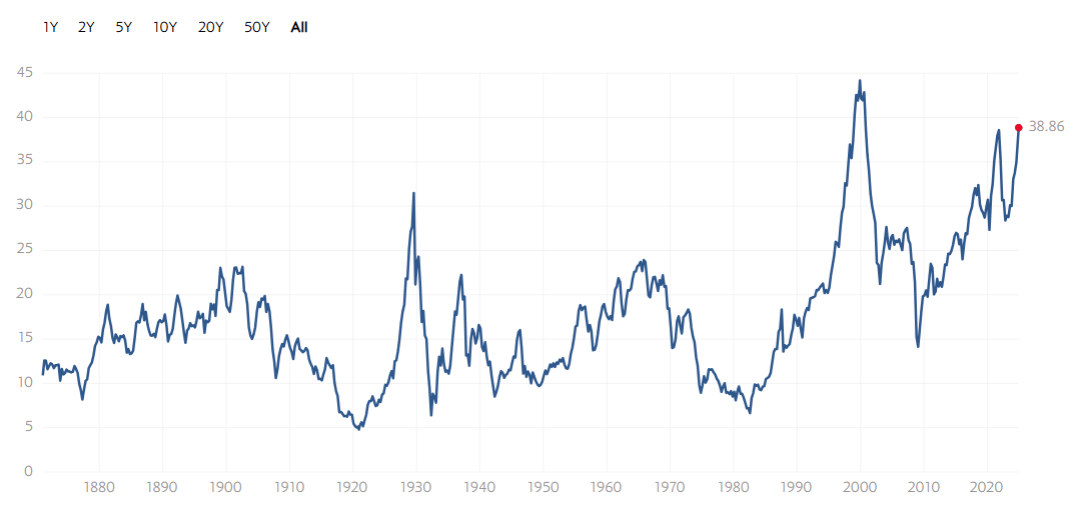- The Wealth Expedition
- Posts
- Risk Buys Experience — And That’s Valuable!
Risk Buys Experience — And That’s Valuable!
There is always going to be monetary risk. But you don’t have to risk losing out on the benefits of experience. Extraordinary value is always available to be gained!

Our weekly newsletter features the following sections:
First time reading? Subscribe for weekly content here.
"Most great people have achieved their greatest success just one step beyond their greatest failure."
-Napoleon Hill (author of Think and Grow Rich)

NEWS
What Happened Last Week
The Consumer Price Index (CPE) rose 0.3% in November, in line with expectations. Regardless of whether food, energy and rental costs are included, inflation is still running above the Fed’s target 2% average.
The NFIB Small Business Optimism Index rose above its 50-year average of 98 for the first time since June 2021, meaning small businesses are feeling much more optimistic about at least the next 3-6 months ahead.
The Federal deficit has continued to run extraordinarily high in the years since COVID, which has assisted with economic growth. But what happens if that deficit is cut dramatically? Cuts may mean long-term benefits with short-term potential difficulty unless tax cuts, deregulation and other policy changes can boost the economy enough to counter the loss in government jobs and spending.
American households expecting their financial situation to be better a year from now jumped to 37.6% in November, an increase of about 8% from October.
Outlooks on government debt increases have become more moderated, which also improved sentiment.
Investor sentiment remains cautiously optimistic as the US market has trended sideways these past two weeks, according to the AAII Investor Sentiment Survey and Fear and Greed Index.

PARADIGM SHIFT
Risk Buys Experience — And That’s Valuable!
Stock investing is risky by nature.
But unless you own a material share in the company, you never have to touch its operations or decision-making. Others run the company for you, and you hear about it after the fact.
Investing in your own business is even riskier. But you have full control. And you have more insight than anyone else into the prospects of its success.
That control and “insider knowledge” gives you an edge that stocks don’t.
We often talk about risk in a broad, sweeping way. But the risk of stock and business are primarily financial. What could you lose if things go the other way? Well, money of course!
But when weighing the risk, don’t forget that you have the choice of whether or not to learn and benefit from experience.
It’s easy to measure money. You have it. Then you have a lot more, or a lot less. Measurability means that monetary factors can influence our decisions more than they should.
It’s not easy to measure the value in skill, character, mindset and strategy. But all of these things will transform and develop inevitably when you take risks with a humble and open mind.
In his book The Only Three Questions That Count, investor Ken Fisher teaches that, in order to learn, we must embrace both humility and regret. Let me explain.
The stock market is a particularly infamous conduit that uses our worst biases against us. If we don’t learn how to admit our past mistakes (rather than ignore them to avoid regret) and humble ourselves to learn from them, then we will continue to fall into the same traps over and over again.
This is true of stock investing. The truth is magnified when it comes to running a business.
But here’s what I’m getting at: risk does not have to be comprehensive.
There is always going to be monetary risk. But you don’t have to risk losing out on the benefits of experience. You have control over that.
Because regardless of the external outcome of the venture, your value as an investor, business owner or even employee can be radically transformed through the real-world experience of taking on calculated risks.


FINANCIAL TOOL
Shiller’s P/E Ratio
You may have heard the term price-to-earnings ratio.
It gets touted all the time as being a kind of indicator of whether stocks are high or low.
But did you know that there is virtually no evidence that P/E ratios are predictive of where stocks are headed? Yet the fact that most investors focus on this ratio reveals how easily the illusion of meaning can creep into investment strategy.
The problem with standard P/E ratios is that price tells us what investors expect companies to make over the next several years, while the earnings tell us what companies made last year. If there is evidence that earnings will be sustainably higher in the future, then P/E ratios may be high for good reason!
But there is also a modified P/E ratio created by Robert Shiller.
This attempts to make the ratio more meaningful by using the average earnings for the past ten years. This is obviously quite different than using just last year’s earnings for the denominator. To top it off, he adjusts these earnings over the past ten years upward based on inflation that has happened since that time.
This helps to smooth out the chart and take a more long-term view of how prices today compare with prices of the past, smoothing out less-meaningful temporary spikes that could be misinterpreted.
Currently the Shiller P/E ratio is at approximately 38, the highest that it’s been since Oct 2022. Before that, it was above 38 from Oct 1998 - Oct 2000. We have a very small sample size, so while it appears to have some predictive power, we still don’t have enough evidence to make this conclusive.
The question some have raised is, why should earnings from ten years ago have any predictive power of where stock prices go from here? It’s a good question.

At most, it appears to have some predictive power of long-term average returns over 10-20 years.
But just like standard P/E ratios, it has no known predictive power for what stocks will do in the short-term.
So this is not a tool to confirm when the market has peaked, but it is an indicator that helps weigh the likely risk/reward tradeoff in the long run.
If we’re not willing to take on the full market risk while future long-term rewards appear likely to be lower than average, then we can use strategies such as holding put options on our current assets, Defined Outcome ETFs, adding bonds to the mix and/or selling covered call options to reduce downside risk.

HERE’S HOW I CAN HELP
COURSE 1 OF 3 IS AVAILABLE!
I am in the process of creating three in-depth digital courses that comprehensively will make you a master of your financial destiny.
The first course, called Low Risk Investing, is available and ready for enrollment. This lays a solid foundation for risk management and everything else investing.
Understanding and utilizing these strategies will give you confidence in knowing exactly what risk to take and why. It will also show you how to eliminate the unnecessary and unwanted risks while maintaining great potential for returns.
These are pre-recorded courses that you can follow at your own pace.
What you'll get with over 3.5 hours of content:
Learn to identify the main risks of investing.
Discover the financial tools, products and strategies at your fingertips.
Determine the risk factors you want to reduce.
Learn how to build a diversified portfolio that weights the odds of success heavily in your favor!
Access a risk tolerance questionnaire, a quick guide to low risk investments, a list of scenarios paired with low risk portfolios, and a list of companies where you can access such strategies.

I’d love to hear from you. Let me know what you’d like to see in upcoming newsletters, articles, or a digital course at Contact Us - The Wealth Expedition.

